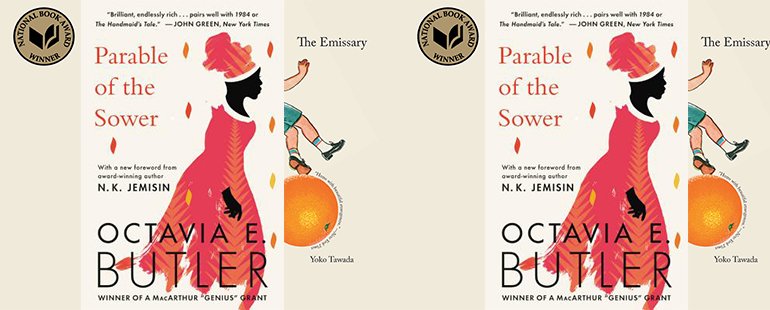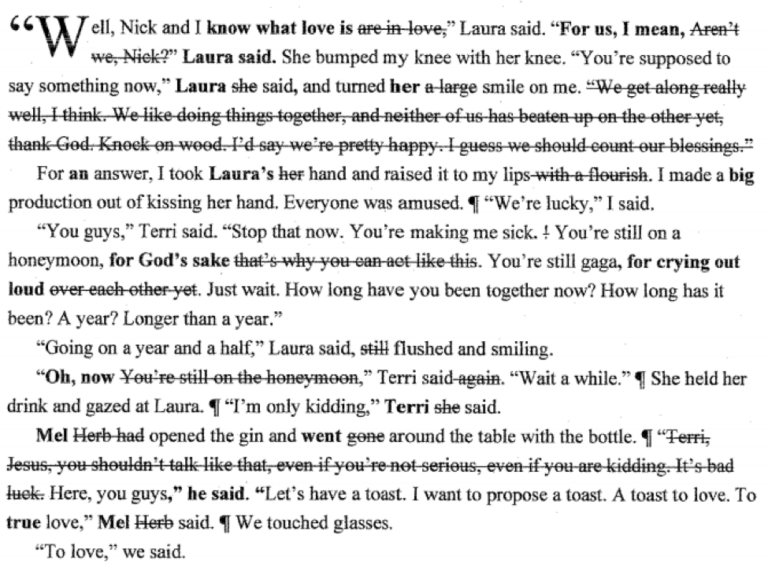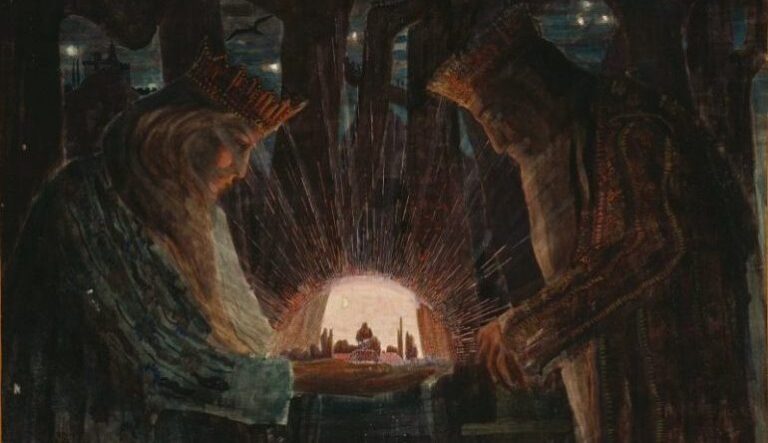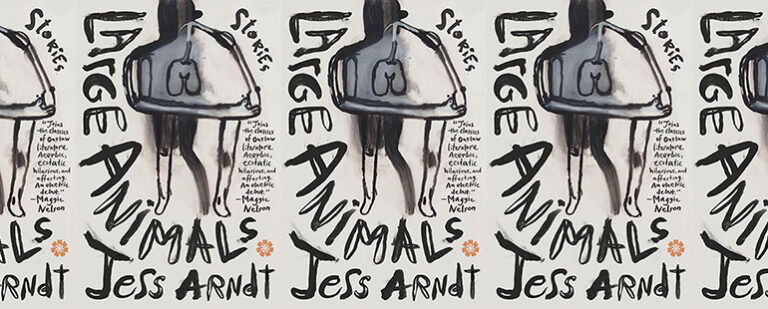Hope in the Apocalypse

Science fiction, though often depicting an imagined future, draws heavily on the concerns of the present. This highly reflective quality makes the genre feel almost prophetic at times. Occasionally these prophesies feel bleak, particularly when it comes to novels parsing out life lived in a dystopian nightmare or a post-apocalyptic environment. Yet, human life still continues to cling on in these stories, even in the grimmest circumstances. Both Octavia Butler and Yoko Tawada, in particular, balance the pain of life in a post-apocalyptic future with stories of human resilience, offering readers some spark of hope in a future that seems hopeless.
Reading Butler’s Parable of the Sower feels like reading a novel set in our own time—the world of the 2020s that Butler imagined back in 1993 is uncannily accurate when compared to the reality we find ourselves in now. The 2020s of Butler’s imagination is wracked by political unrest and upheaval, the impact of corporate greed, and climate change, which ravages the United States; the world in Parable of the Sower is cut-throat and bleak, with those living outside of large metropolitan spaces sequestered in smaller, walled towns. It is a risk to leave the latter, which represent spaces of limited safety, but the protagonist, a young woman named Lauren Oya Olamina, knows that to stay in the walled towns is a slow death. The novel follows her as she prepares for her inevitable departure from her home, eventually brought about by an attack on her community that leaves many dead and the rest scattered. With a small group of survivors, Lauren decides to head north to try to find a new place for the group to live. Lauren is resilient, tough, and intensely pragmatic; she is a leader who will undoubtedly survive in Butler’s brutal world, and who will save as many people as she can.
Tawada’s The Emissary, originally published in Japanese in 2014 and published in English translation by Margaret Mitsutani in 2018, presents a world that is similar to that of Butler’s. Tawada’s Japan, set in some unspecified future is, like the future California of Parable of the Sower, facing the consequences of climate change, decades of pollution, and global political unrest. This future Japan has closed its borders to the outside world, leaving its citizens to make do with what the country is able to produce. Unlike the world of Parable of the Sower, however, the children in The Emissary suffer from numerous physical abnormalities due to the amount of pollution in the world around them. While the young struggle with consistent health issues, the elderly are granted an extraordinarily long life and good health. The Emissary centers on the relationship between Yoshio, a man who is over a hundred, and his great-grandson, Mumei, who is in grade school.
Though written at vastly different times, both Parable of the Sower and The Emissary present similar concerns about the type of future those of us in the present are building towards. Key themes for both Butler and Tawada are the effects of unchecked pollution and the resulting climate change—as well as their impact on the lives of the young. In both novels, there is a sense that the adults are responsible for the way things have panned out. Lauren’s father expresses a sense of guilt that his daughter’s world is as treacherous as it is, while Yoshio often bemoans the irresponsibility of the elderly whose decisions in the past made the world so inhospitable for the young. Both Lauren and Mumei, on the other hand, share a similar matter-of-fact view of their circumstances. Lauren brushes aside her father’s words to insist that he instead teach her more useful skills, while Mumei shrugs his continued health struggles off with a bright positivity that often takes his great-grandfather by surprise. Implicit in both Butler’s and Tawada’s novels is the critique of previous generations who made choices that created the struggles facing these worlds. But Lauren’s and Mumei’s response to the elderly, however, highlight that, while critique and acknowledgment of guilt might be nice, these things will not make the world into a more hospitable place. For Lauren, what is important is to make sure she can survive in this world; for, Mumei, whose health problems mean that death may come at any moment, he must make do with the life that he has without dwelling on his situation.
Where Butler and Tawada somewhat differ, however, is in how they suss out hope from their imagined futures. Interestingly, both writers imagine the apocalypse as something gradual and creeping, rather than a single catastrophic event that irreparably changed the world. Though Tawada hints at some sort of nuclear event, neither novel fixates on the mechanisms of their particular apocalypses; what is important is not what happened, but how human beings decide to move through the worlds they find themselves in. The spark of hope in Parable of the Sower is thus fairly clear: Lauren’s resilience, adaptability, and her creation of the Earthseed belief system offer readers a way to imagine a future for the characters within the novel. As she says at one point in the novel:
It isn’t enough for us to just survive, limping along, playing business as usual while things get worse and worse. If that’s the shape we give to God, then someday we must become too weak—too poor, too hungry, too sick—to defend ourselves. Then we’ll be wiped out. There has to be more that we can do, a better destiny that we can shape. Another place. Another way. Something!
The autonomy that Lauren wrestles from her world is in marked contrast to the way Tawada presents her characters’ struggles in The Emissary. Unlike Lauren, both Yoshio and Mumei lack autonomy; Yoshio is powerless to heal his beloved great-grandson, and Mumei’s life is in a perpetual state of precarity. The two make do with the limited resources they have and, as they have so little control over the material aspects of their lives, their resistance to despair stems mainly from the surprisingly light-hearted tone that permeates the story. Tawada describes Mumei’s physical struggles without mincing words, describing alarming symptoms directly—like how his teeth “drop out one after another like pomegranate pulp, leaving his mouth smeared with blood.” These painfully visceral images, however, are always served to the reader in contrast with Mumei’s outlook on life. While Yoshio frets over Mumei’s condition, Mumei takes a very matter-of-fact or “things can’t be helped” approach to his young life. Tawada writes that Mumei “didn’t seem to know what ‘suffering’ meant; he simply coughed when food wouldn’t go down, or vomited it back up. Of course he felt pain, but it was pure pain, unaccompanied by any ‘Why am I the only one who has to suffer like this?’ sort of lamentations that Yoshiro knew so well.” The spark of hope in The Emissary thus comes less from the direct actions taken by the characters, but more from how they orient themselves to their crisis. The novel focuses on the warm and charming relationship between Yoshio and Mumei, rather than on Mumei’s health, and the joys they find in each other. For all the darkness that presses in on them, the pair have a lively and vibrant relationship.
In both Parable of the Sower and The Emissary, the larger question of whether humanity will be able to continue to exist into an indefinite future is never answered. It is not clear whether Lauren’s vision for the future of humans among the stars can ever come to pass, nor is it clear by the end of The Emissary whether Mumei will even live beyond his teenage years. The novels’ concerns, instead, remain very close to home, on the relationships between the characters and their journeys to protect the lives of those they love. Neither Butler nor Tawada is afraid to face the possibility of a dark future for humanity, but both offer readers a surprising spark of hope in the form of human beings’ resilience in the face of uncertain futures.
This piece was originally published on April 20, 2021.


